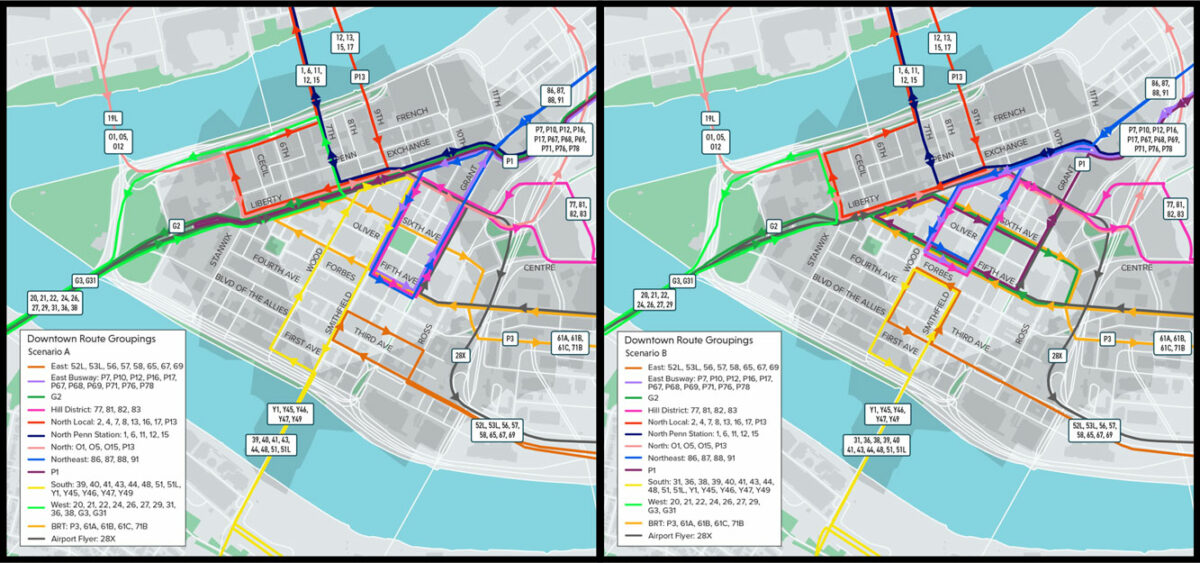After months of public meetings and staff work with consultants, Pittsburgh Regional Transit will unveil its final recommendations for simplifying bus routes in Downtown Pittsburgh at two online meetings this week.
The Downtown review is the first step in looking at all the agency’s routes over the next few years and was prompted by the upcoming installation of the Bus Rapid Transit system between Oakland and the Golden Triangle. The BRT will use exclusive lanes to move through Downtown with fewer traffic delays, and the agency wants to keep other buses off those streets as much as possible.
Right now, 84 routes follow 26 different paths through the Downtown area. None of those routes will be eliminated, but in many cases the path they follow will be shorter and have fewer turns to reduce the time they spend there.
“Downtown is generally the slowest part of every route,” said PRT spokesman Adam Brandolph, pointing to traffic, pedestrians and stop lights as the primary reasons.
“We aimed to simplify the system. The changes reduce the miles and likely the time buses spend in Downtown. We’re going to run on fewer blocks.”
The agency has spent a lot of time talking to riders about how they use the Downtown area. One thing they learned is that many riders head Downtown so they can transfer to at least one other bus to reach their final destination.
Staff and consultants also have spoken extensively to businesses and the city as they plotted the recommendations. The city’s Department of Mobility and Infrastructure and the Pittsburgh Downtown Partnership have goals of making the business district more walkable and reserving areas such as Smithfield Street for more outdoor seating and recreation.
The plans focus on a common central point for decades Downtown: the clock from the former Kaufmann’s department store at Fifth Avenue and Smithfield. The goal is to have every route have a stop within a couple of blocks of that site and to make transfers easier.
“Thankfully, Downtown isn’t a big area to walk,” Brandolph said, “but we had to take into consideration people with mobility issues and how they can make connections. We have what we’re calling a final proposal, but we still want to hear from people in case there still need to be changes.”
When the public process began in February, the agency offered two concepts for about a dozen groups of routes depending on the direction they are coming from or the type of service they are providing, such as the busways to eastern and western suburbs. That has been pared to six route groups, and an interactive map on the website for the agency’s NexTransit long-term plan allows riders to see recommendations for each route group by where they originate: north, south, east, west, northeast and Martin Luther King Jr. East Busway.
The online meetings will be held at 5:30 p.m. Wednesday and noon Thursday, and advance registration is required.
Ed covers transportation at the Pittsburgh Post-Gazette, but he's currently on strike. Email him at eblazina@unionprogress.com.



